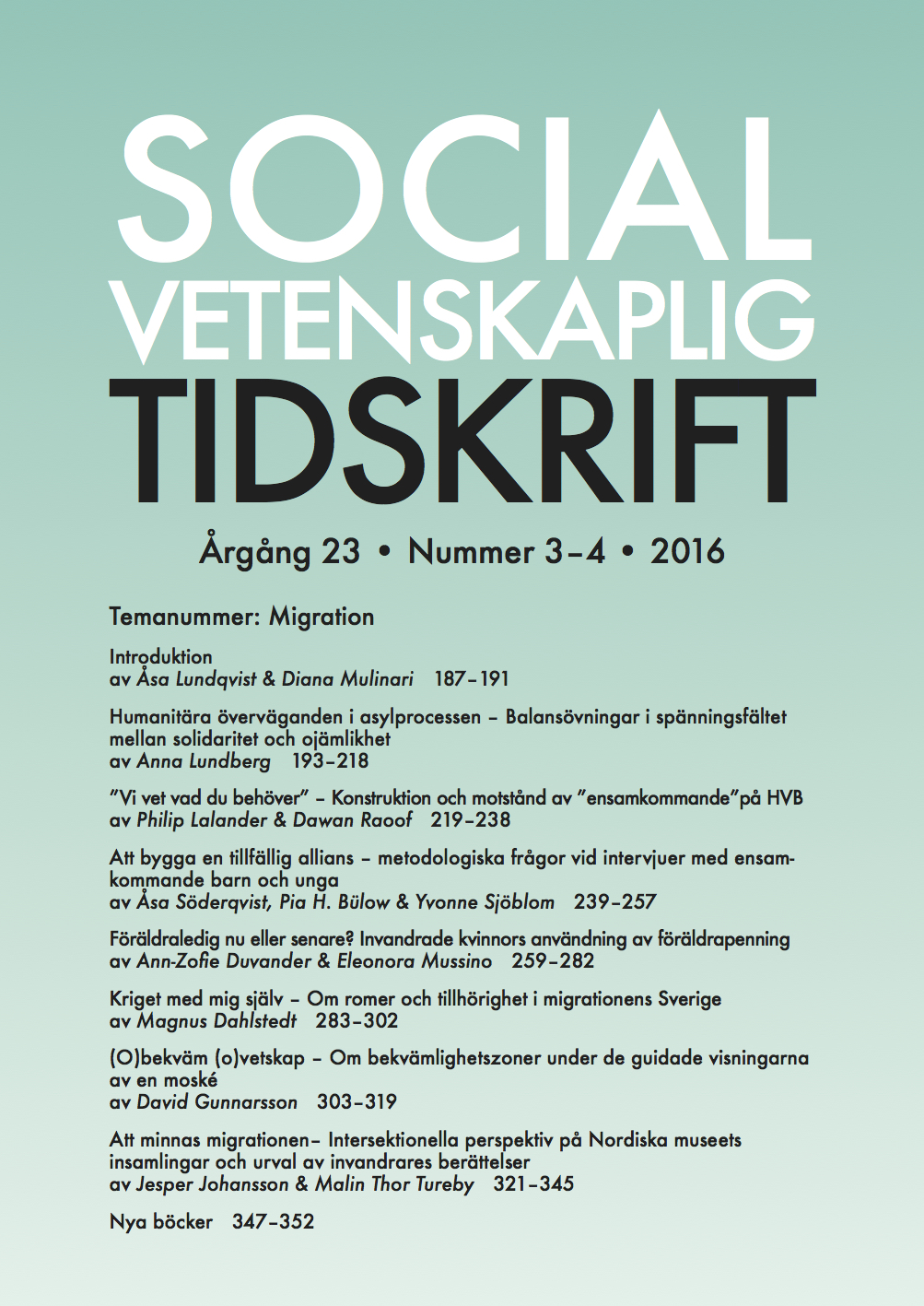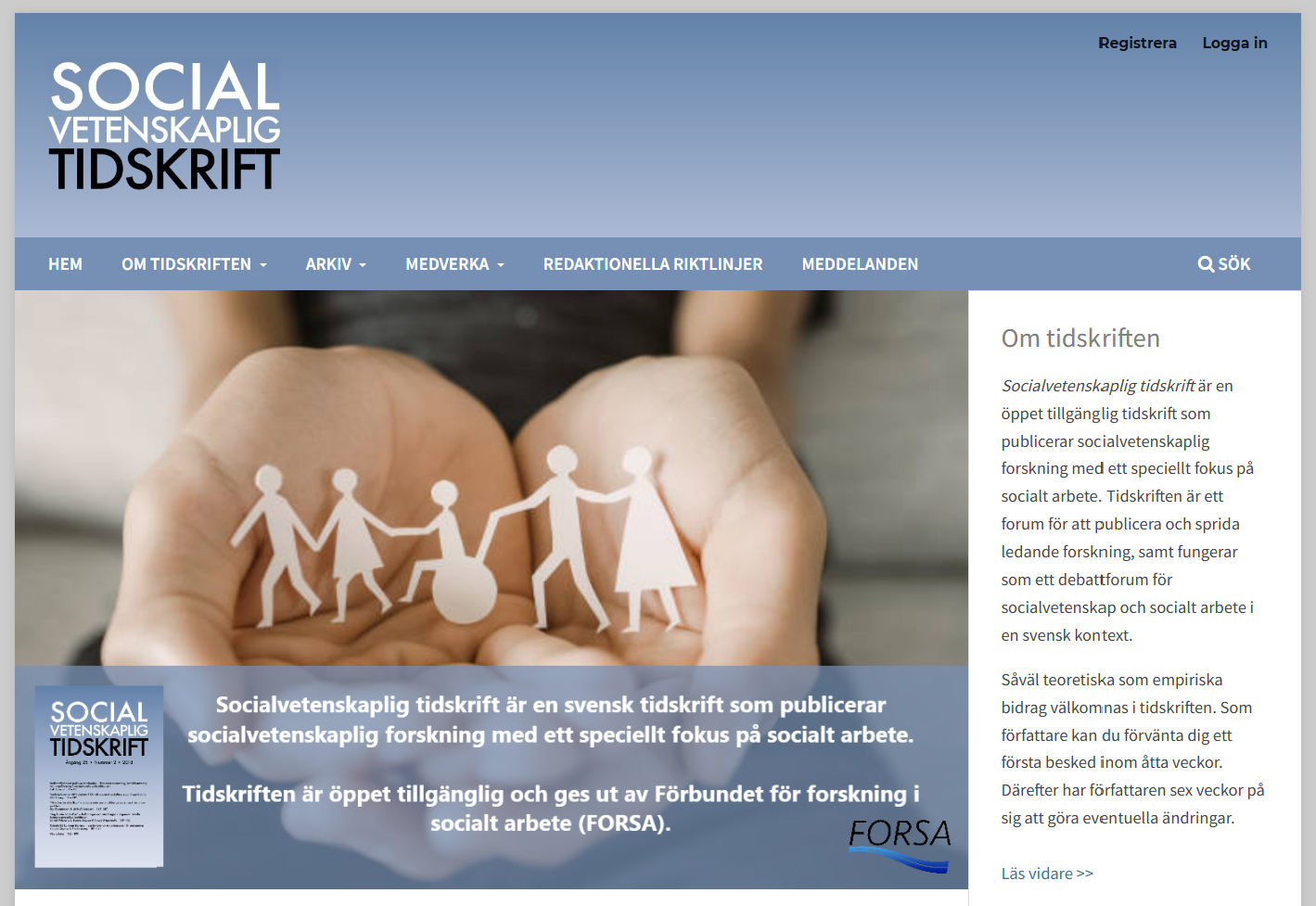Att minnas migrationen Intersektionella perspektiv på Nordiska museets insamlingar och urval av invandrares berättelser
DOI:
https://doi.org/10.3384/SVT.2016.23.3-4.2322Abstract
Remembering the migration. Intersectional perspectives on the Nordic Museum’s collections and selections of immigrant narratives
e Swedish self-image has been transformed in recent decades from the self-image of a homogeneous country with immigrants to a self-perception of a multicultural society. In this article we investigate how memory institutions contribute to constructing and dissolving the boundaries of the Swedish community by including or excluding immigrants in the constructions of a national self-perception. e ongoing collection ”Remembering the Migration” at the Nordic Museum constitutes the empi- rical case study. e current collection and previous collections of different immigrant narratives at the museum are examples of documentation of subjective experiences and interpretations of the mul- ticultural society in Sweden against a background of increased migration in the postwar period.
Our analysis concludes that the collection, ”Remembering the Migration” has an including per- spective. ere is an outspoken objective to incorporate the immigrants’ stories about migration in the common historiography and the national cultural heritage in multicultural Sweden. However, our study also shows that the questionnaire used in the collection lacks questions about experiences of discrimination or racism and thereby contributes to recreating a tacit narrative about Sweden as an inclusive and non-racist country or nation. is self-perception is also generated at the website of the Museum, where a selection of 17 collected narratives are published. In general none of these stories tell about experiences of racism or discrimination. On the contrary, most narrators in these narratives position themselves as well-included in Swedish society, mostly through their personal efforts of hard work and/or ambitious studies. However, our study indicates that this including, multicultural and non-racist self-perception is questioned and negotiated by some people who submitted their life stories and rather reveals that Sweden is characterized by, and has previously been characterized by, both inclusion and exclusion in relation to migrants. Furthermore our ana- lysis of the published excerpts from the life stories reveals that exclusion could also be experienced from gender and class positions as well as in some cases also on the basis of ethnicity.
Downloads
Publicerad
Referera så här
Nummer
Sektion
Licens
Copyright (c) 2017 Socialvetenskaplig tidskrift

Det här verket är licensierat under en Creative Commons Erkännande 4.0 Internationell-licens.
Allt material i Socialvetenskaplig tidskrift publiceras sedan 2022 (Vol 28 Nr 2) med omedelbar öppen tillgång (open access), under Creative Commons-licensen CC BY 4.0. Upphovsrätten till innehållet tillhör respektive författare.
Allt innehåll i tidskriften är fritt tillgängligt utan kostnad och får fritt läsas, laddas ned, kopieras, delas, skrivas ut och länkas. När innehållet används måste författare, källa och licens anges. Författaren kan fritt göra sin publicerade text tillgänglig på institutionella och internetbaserade arkiv, exempelvis sitt lärosätes digitala arkiv eller andra tjänster för detta.
Inga publiceringsavgifter tas ut vid publicering i Socialvetenskaplig tidskrift.


